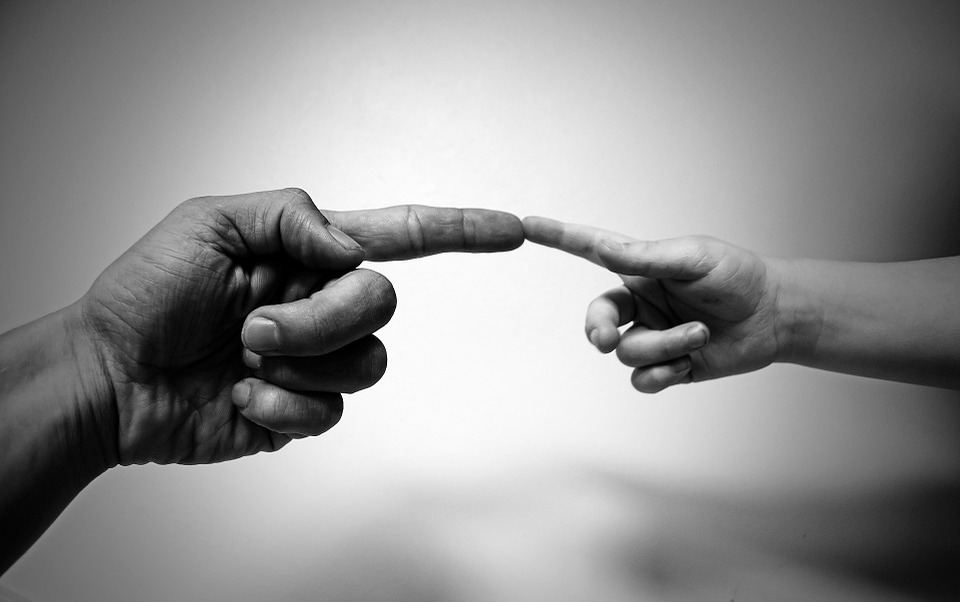Non-Verbal Communication Skills 101: Barriers of Effective Communication

Communication is an inevitable part of your personal and professional life. The importance of communication is evident from the fact that the chances of success in either of the two domains of your life are next to nothing if you fail to develop your communication skills. Unfortunately, however, the majority of us keep our focus on developing verbal communication skills and non-verbal communication is usually ignored. This is perhaps the reason why you can find plenty of people who are good at skills like public speaking and presentations but are not equally skilled at non-verbal communication. If you have been someone who has failed to realize the importance of non-verbal communication, the information ahead is about to burst your bubble.
Non-verbal communication is every bit as important for success as verbal communication. It is commonly used for the purpose of expressing one’s emotions, to send out cues about one’s personality, for the display of interpersonal attitudes, and for an overall and comprehensive management of the communication. Non-verbal communication is an imperative component of communication as it provides a platform for the expression of your feelings and gives meaning to your words. This way, it helps a great deal in crafting bonds and connections with the other people.
It is only fair to state that the non-verbal cues are sometimes so prominent that they serve the purpose of delivering a message better than your own words. Poor non-verbal skills can make the recipient uncomfortable and confused since it turns into an effort to fully understand your message. Lack of non-verbal skills is among the top reasons why your conversations don’t flow naturally and why you find it hard to clarify your message and build trust and rapport among the people around you.
Now that you have a better understanding of why it’s important to work on your non-verbal communication skills, your next move should be to look for the tips that can help you accomplish this goal. Making research into such strategies can be a hectic task. Thanks to us, however, we have made the task easier for you by compiling the non-verbal communication 101. You can think of it as a guide to being better at the non-verbal communication and unlocking your true potential in the realm of your personal as well as professional life.
Eye Contact Is A MUST
Remember the time when you were in high school and were afraid of giving a presentation so then your teacher told you to not look at your classmates? She suggested to rather look at the wall clock at the back of the class, or perhaps the door at the back corner. While she did it with the purest of intentions to help you fight your fear, her suggestion, however, was not a good one, to say the least.
Developing the skill of maintaining eye contact while communicating is fundamental to getting better at non-verbal communication. It doesn’t make sense to turn your back on this skill just because you find it hard to master. You’re not the only who felt like that, pretty much everyone goes through the same phase until they face their fear and develop their skill of maintaining the eye contact.
By sustaining eye contact as you give a presentation or talk to an audience, you feed it in their subconscious minds that you are confident about yourself, what you are telling them, and generally that you know what you’re talking about. On the other hand, maintaining eye contact while someone is conversing with you is also imperative since it leaves a cue that you are sincerely interested in what they have to say. If done properly, eye contact removes all awkwardness from the communication and makes room for comfort. A word of caution, though. Make sure that you walk the line between eye contact and a brooding stare.
Respect Personal Space
The next skill that puts you on the right track to mastering the art of non-verbal communication skills is[restrict] to understand the meaning of personal space and respect it when communicating with other people. There is no argument over the fact that the distance between the two people, while they are having a conversation, is construed differently in different cultures. However, being too close to anyone while have a casual or professional conversation is almost always translated as the intrusion of the personal space.
Think about it, if you are having a random conversation with someone, would you feel comfortable if the person decided to stand so close to you that there was only room for air to pass from in between? Just as you wouldn’t, other people don’t either. The reason is that getting close is taken as a sign of aggression. It may sound bizarre, but imagine that you have gotten into an argument with someone. The guy is getting under your skin and you are this close to losing it. As a display of your aggression, wouldn’t you take a couple of steps towards him while responding to his jibber-jabber? Doesn’t sound all that weird now, does it?
As a rule of thumb, make a habit of standing at arm’s length at least while having formal conversations. It presents you as more professional; someone who understands non-verbal cues and is mature enough to respect the personal space of other people. But don’t stand too far away either. It sends out a signal of a lack of confidence or interest. Simply put, standing too close or too far away has a consequence of eliminating comfort from the communication.
Let Your Facial Expressions Deliver The Message
No one ever talks about non-verbal communication skills without emphasizing the importance of facial expressions. It is the facial expressions which give meaning to your words, help other people understand your emotions, create an impact of whatever it is that you say, sends out cues about your personality or the current state of mind, etc. As evident, your facial expressions are multipurpose in nature.
The good news is that facial expressions are perhaps the easiest of all non-verbal skills to master. This is because the meaning of the facial expressions remain the same regardless of where you are in the whole world. It doesn’t matter the kind of people you are with or what is their culture, if you frown, it is always going to imply that you are upset. Similarly, if you smile at someone, the only meaning associated with it is that of warmth, love, and affection.
Remember that understanding the kind of non-verbal cue to be sent out in a particular scenario is a skill in itself that you have to develop. For instance, having a smile on your face works impeccably for a wide range of scenarios. However, the same can turn against you if you choose to express a smile while you are being critiqued by your boss for the subpar quality of work that you submitted this morning.
In other words, a part of mastering non-verbal communication is to make sure that you can analyze the situation at hand before choosing the facial expression that you deem suitable for the given scenario.
What Does Your Posture Represent
Non-verbal communication is a broad component of communication that doesn’t confine itself to eye contact or facial expression. This is perhaps why so many people are poor at non-verbal communication since they never put an effort into understanding that something as simple as their posture can deliver its own message as well. If you don’t know the kind of signal being sent out due to your posture, you can never work to fix it.
For instance, imagine that you are sitting in a formal meeting in your office. You are trying to maintain the eye contact to let everyone know that you are highly interested in whatever it is that is being talked about. You are thinking that you are the god of non-verbal communication since you have been able to maintain eye contact for so long. However, little do you know that without even knowing, you are sending out an even stronger signal of being uninterested just because of your posture.
So what did you do wrong? You were perhaps slouching on your seat, or maybe you were tapping your fingers on your desk. Such cues of non-verbal communication are commonly construed as the sign of being uninterested or worse, bored. Therefore, for almost all scenarios, it is recommended to try and sit upright with your face towards the person who is talking to you. This can help a great deal in ruling out the possibility of leaving a negative non-verbal cue without knowing.
Keep Your Tone Under Control
Your verbal and non-verbal communication go hand in hand. For your verbal communication to deliver the message that you had in mind and have the same effect, your non-verbal communication must also support be compatible with it. It’s amazing how your tone or sounds can completely change the message that is being delivered. As always, let’s understand the impact of your tone with an example. As well.
For instance, think of a scenario that your boss requested you to stay in late and work extra hours today to complete the report that is to be sent out by tomorrow morning. Your verbal response to the request is “Fine, I’ll do it”. Now let us see how your tone can change the meaning of this verbal message. Consider that you said those words humbly with a smile on your face. In this case, you are sending out a message of agreement. On the other hand, however, if you had a sarcastic tone and a louder voice when you responded with those words, it will surely imply that you are grunting and did not like the request at all.
For impeccable communication, therefore, it is important that your verbal and non-verbal cues are compatible with each other. If both of these components of communication are sending a different signal, it can only raise confusion and put the recipient in an uncomfortable position to further the conversation. This can also lead to you being entitled with a label of “Attitude Problem” as well.
Conclusion
The importance of non-verbal communication skills is surely unparalleled. It is because a fair amount of your day to day communication is interpersonal in nature; a type of communication that literally dies without non-verbal skills. Mastering the art of non-verbal communication is also important because it benefits you both ways. It doesn’t only lend you a hand in delivering your message as per your expectations, but it also serves the purpose of creating a better understanding of other’s response as well. By ensuring convenience for other people in understanding your stance and having the capability to fully understand their message in return, you can create a connection with them that supports the natural flow of communication with ease and comfort.
The tips mentioned above for you to improve your non-verbal communication may seem like a lot to handle at first. But once you start to get hold of these strategies, they will merge into your routine as a seamless habit. It will take some time for you to master each one of these, but once you have the grasp over them, you will no longer have to put a deliberate effort into applying these tips for better non-verbal communication. Point being, the effort that you’ll put into learning non-verbal communication skills is going to be worth the while at the end of the day.
To make it easier for yourself, you can choose to take on these strategies one by one. Instead of trying to applying all of these from tomorrow morning, pick one of them and focus on honing it properly before you move on to the next. That way, you can prevent yourself from being overwhelmed. Good luck with all of your efforts! [/restrict]

